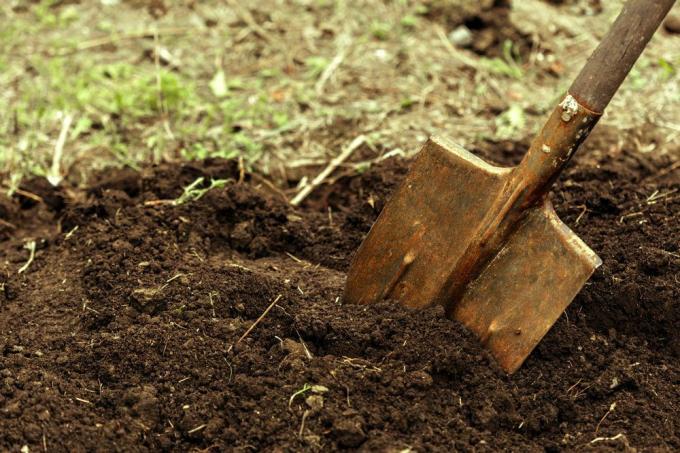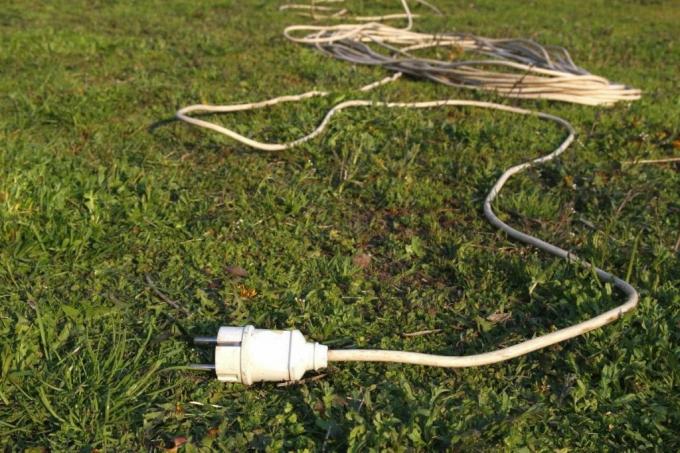
table of contents
- Underground or Above Ground?
- Under the earth
- Above the Earth
- frequently asked Questions
Laying power cables in the garden is possible both above and below ground. Our guide shows how it works and what to look out for.
In a nutshell
- Protect connections
- consider gardening work when planning
- Use underground cables
- Consider isolation
- Underground power cables are safer
Underground or Above Ground?
The first question you need to answer is the type of laying. Should the cable be laid under or over the ground? Both have advantages and disadvantages.
The most important thing is the purpose for which the power supply is required. If you only need the electricity temporarily or only during the gardening season, an above-ground line is usually sufficient. For longer deployments or fixed installations, such as a pump, it is better to lay them underground.

Under the earth
If a permanent power supply is required, it is advisable to lay the power cable underground.
Advantages:
- better protected
- more durable and stable
- optically inconspicuous
- does not represent a trip hazard
Disadvantage:
- greater effort during installation
- higher cost
- If changes are necessary, cables cannot simply be laid
When installing the power supply in the garden, proceed as follows:
-
Planning: Create a site plan for the cable on which the route is precisely recorded. Also calculate what length you need.
-
Dig a trench: Dig a trench at least two inches deep and about eight inches wide.
-
Fill in sand: Fill in quartz sand until it is about ten centimeters high. Then smooth this to get a flat surface.
-
Protect cables: Now pull the cable through a cable duct. Because despite the existing sheathing or insulation, additional protection is advisable.
-
Laying the power cable: Place the hose in the prepared pit and gently press it into place. Make sure that it is as centered as possible.
- Fill up: Fill another ten centimeters of quartz sand into the trench and knock it down. After that, you can completely fill the trench with earth and solidify this too.

Tip: You can rent a mini excavator to dig the trench. The trench will then be wider than necessary, but the workload is significantly less, especially with very long cables.
Above the Earth
Do you only need the power supply for a short time or you do not have the opportunity to use the power cord Laying it so that it runs underground, there are a few factors to consider. These include:
Advantages:
- more flexible in alignment
- lower expense
- lower costs
- Damage is noticed more quickly and easily
- less working time
Disadvantage:
- more prone to damage
- can be a stumbling block
- optically disturbing if necessary
If you want to lay a power cable that is above ground, you have various options. It is ideal to use a tension wire as a guide and a cable protection hose or cable protection tube as additional security.
Instructions:
-
Planning: Plan the exact route of the power cable. Take into account possible risks, such as mowing the lawn or frequently frequented areas. The transition from lawn to lawn edging stones or directly at the edge of the path is best.
-
Tensioning the wire: The wire is now tensioned as a guide. Two fixed points are ideal for this. For example, a house wall, a mast, the fence or a wall can be used for this purpose.
-
Protect cables: Now guide the power cable through the protective hose or a pipe.
-
Lay cable: Route the prepared connection along the wire.
- Fixation: Use cable ties or clamps to connect the power cable to the wire at a maximum distance of one meter.

Note: Make absolutely sure that the power cable is not under tension when it is being laid. This can lead to damage.
frequently asked Questions
The minimum number should be three. If you want to connect several devices, you should use a variant with five wires.
An underground cable must always be laid when a power cable lies in or on the ground, is exposed to moisture or the weather. Because this variant is thicker insulated and designed to withstand such influences.
Even if you lay underground cables underground in the garden, you must provide additional protection against rodents and roots. Otherwise, the cables can be damaged very quickly.



